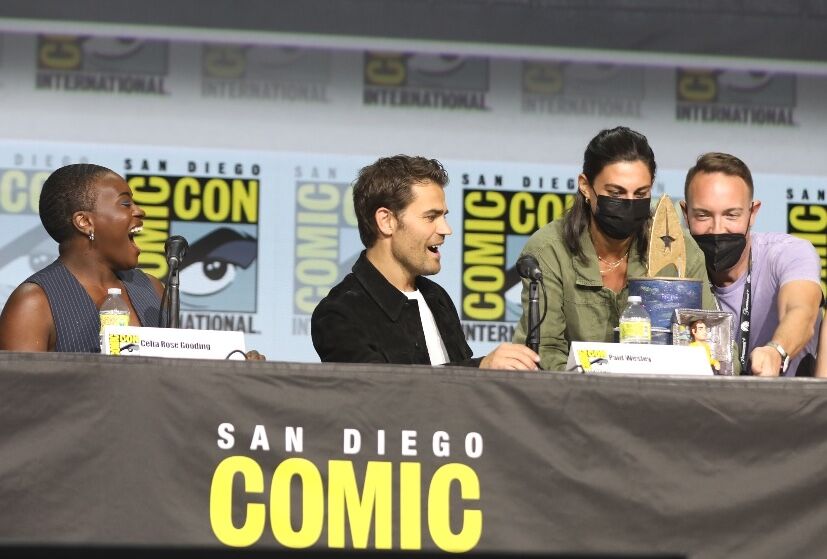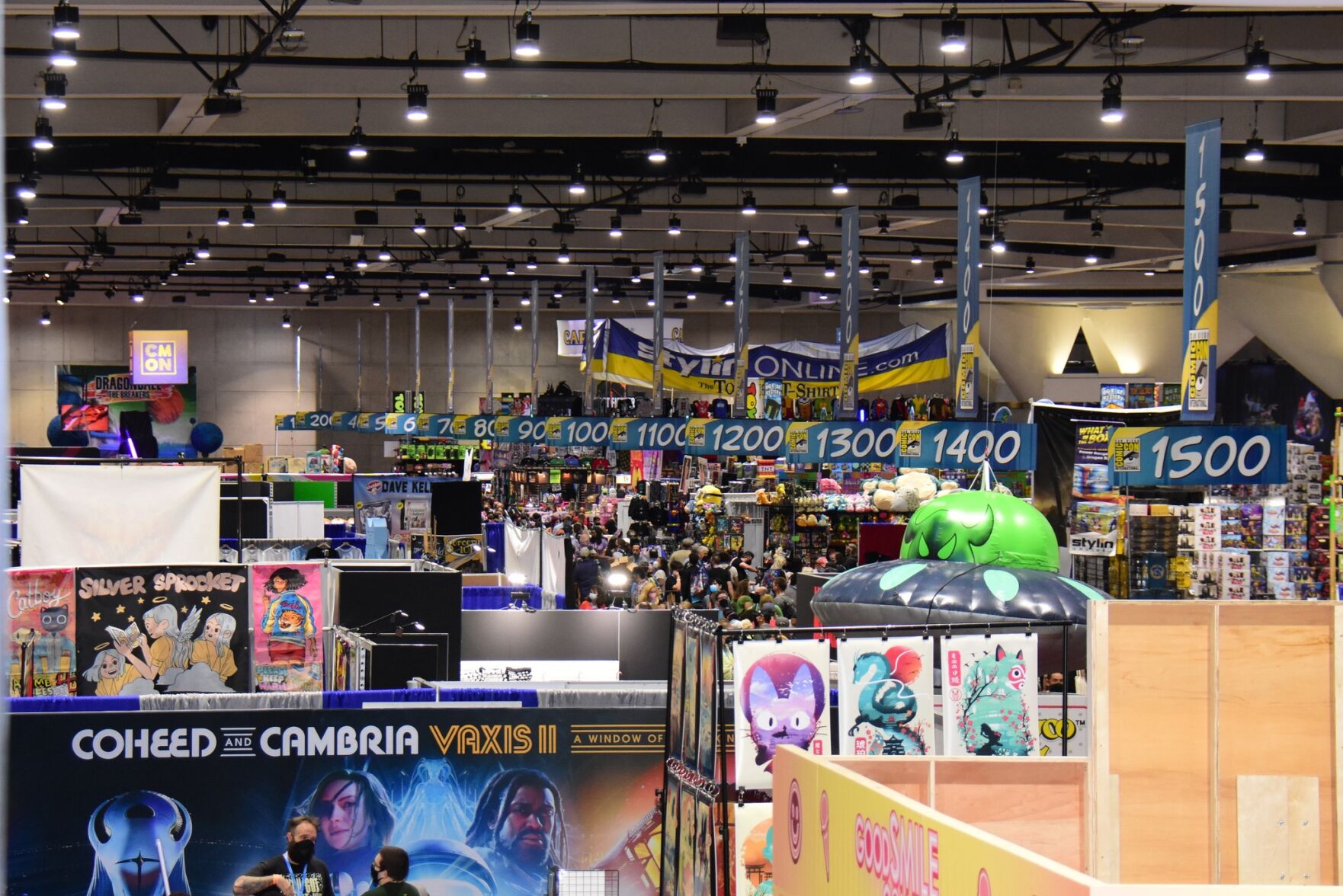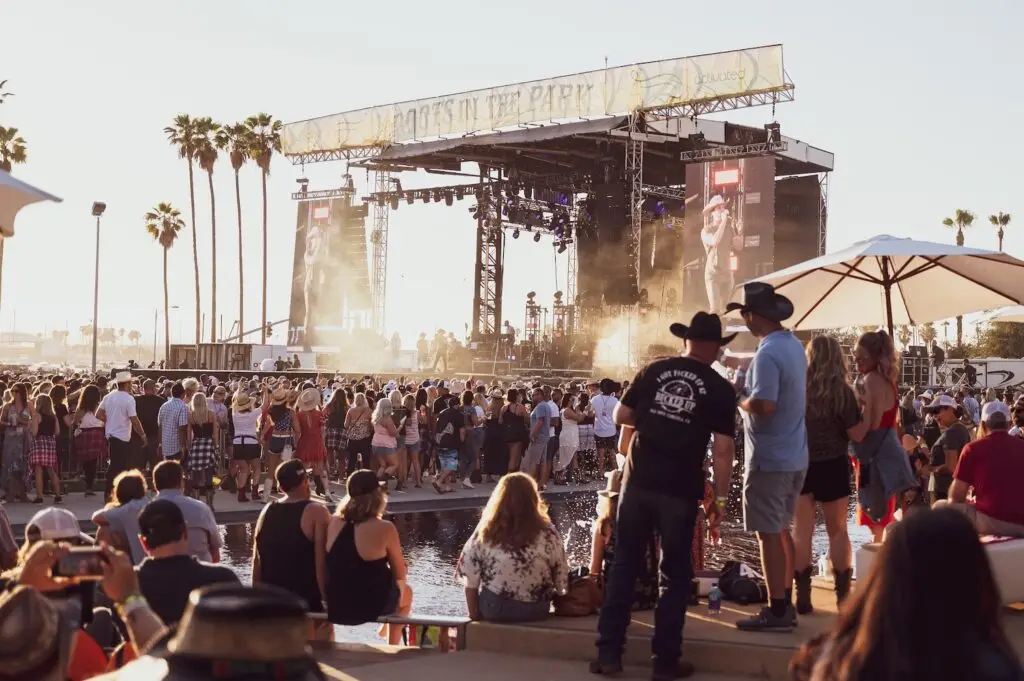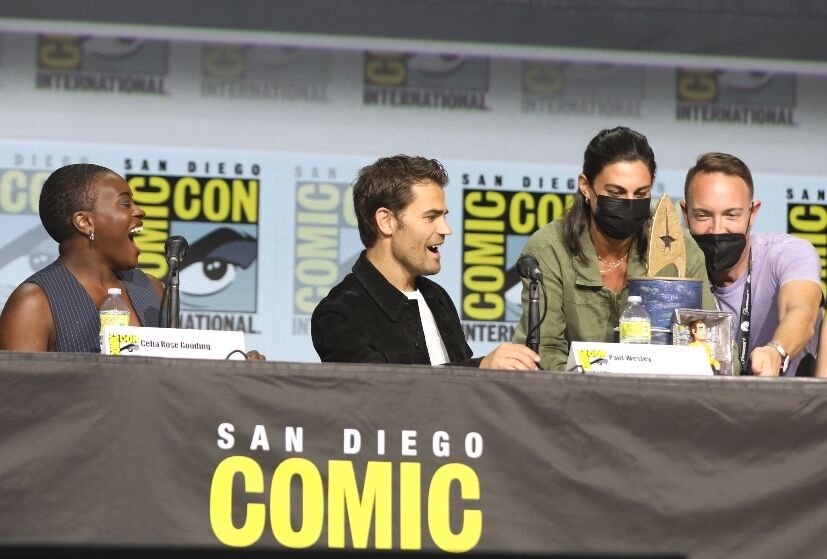
SDCC, 2022 panel
Courtesy of SDCC
Comic-Con 2023 is less than a week away, but with many major studios having pulled out and fewer big-named celebs on the call sheet, it’s gearing up to look a lot different this year.
At the beginning of May, the Writers Guild of America began a strike against the Alliance of Motion Picture and Television Producers, which meant no new writing or editing on any movies or TV shows. The guild also wrote on its website that its members should not make “promotional appearances about [their] work”—which includes speaking at Comic-Con, even about media that is already completed.
This is the first time, at least in recent memory, that the Hollywood strikes will affect San Diego Comic-Con, says Kerry Dixon, editor-in-chief of The San Diego Comic-Con Unofficial Blog. The last WGA strike took place in the wintertime (November 2007 to February 2008), so Comic-Con wasn’t impacted.
“Because union rules prevent the WGA from promoting their Hollywood projects, that affects SDCC panels,” Dixon says. “Hollywood has definitely scaled back their presence at the convention this year with so much uncertainty in their own industry, but I don’t believe that’s a lack of faith in the con, simply due to timing and union rules about promotion.”
During a press conference on July 13 led by Screen Actors Guild – American Federation of Television and Radio Artists president Fran Drescher and lead negotiator Duncan Crabtree, SAG-AFTRA officially joined the WGA by going on strike.
Yet, even before the vote, major studios were pulling out of the convention. Neither DC Studios nor Marvel Studios will be at Comic-Con this year. Sony, Lucasfilm, Universal Pictures, Netflix, and HBO are also out. With major studios and stars absent this year, attendees are likely to see many more animation panels than usual. Those panels, Dixon says, will also get a bigger spotlight.
These developments are not having an effect on the number of badgeholders—after all, people buy tickets long before any programming, exhibitors, or guests for Comic-Con are even announced. “Attendance should be back to pre-Covid levels,” says David Glanzer, a spokesman for Comic-Con. “Tickets went on sale late last year and, as we have come to expect, they quickly sold out.” The convention center will welcome more than 135,000 attendees between July 20 and 23.
Glanzer also noted that, even without industry upheaval, not every studio attends every year. “There can be any number of reasons for a studio to not attend,” he says. “This year, of course, there is the matter of the [current and pending strikes], and that may prevent some from attending. Our hope is for a resolution that will prove beneficial to all parties and allow everyone to continue the work they love.”

Comic-Con 2022, showrooms
Courtesy of SDCC
According to Maren Dougherty, a spokeswoman for the San Diego Convention Center Corporation, the strikes are also unlikely to diminish the convention’s impact on the San Diego economy. The convention is expected to create a regional economic footprint of more than $160 million. Factors include participants’ spending on hotels, restaurants, attractions, AV companies, printers, designers, photographers, transportation providers, caterers, and even dry cleaners. Plus, Dougherty says, the convention will generate more than $3 million in hotel and sales tax revenue.
The region has missed that footprint in recent years—in 2022, Comic-Con added $164.1 million to the economy, but in 2021 and 2020 that number was zero. In 2019, it brought in $162.2 million and in 2018, $149.9 million.
“Though the strike may impact some Hollywood panels, we’re preparing to host a vibrant event filled with engaging speakers, games, artwork, exhibits, and the incredible Comic-Con community,” Dougherty says.
Local unions are also monitoring the writers’ strike and potential actors’ strike for how they could affect their members. Carlos Cota is a trustee for The International Alliance of Theatrical Stage Employees (IATSE), the union for backstage and front-of-house workers in the entertainment industry. He says that the mass studio exodus and the possible actors’ strike could jeopardize the panel discussions that are normally held in Hall H. He’s hoping the unions can reach an agreement before the convention so that doesn’t happen.
Moreover, Cota says, all of his members in the film and television side of the industry are out of work due to the strikes. “The only members I know of who are working currently in our jurisdiction are either [employed] on unscripted reality [television] or the occasional commercial,” he says. On the other hand, those that work live events, including meetings and conventions, theater, and concerts, have seen little fallout.
Cota says his members will be able to work at Comic-Con as scheduled without fears of crossing the picket line. And while his union is supportive of the Writers and Screen Actors Guilds’ efforts to secure a fair contract, his own members won’t be significantly affected regardless of the outcome. “We enjoy when folks from the film and television industry can participate in the festivities, but I do not believe the studios pulling out of this year’s event will have a substantial impact,” he says.
Brigette Browning, president of UNITE HERE and head of the Labor Council, also says her members who work on hotel and food service will still work at the convention if there’s a strike. “Our contracts don’t allow us to respect another union’s picket line, so our folks would have to go to work,” she says. “We haven’t discussed [the Hollywood strikes] because I’m not aware of activity here locally.”
Comic-Con 2023 takes place between July 20 to July 23 at the downtown Convention Center. If you’re heading to the event, check out our guide to Comic-Con including including dates, times, badge pick-up and parking info.


















